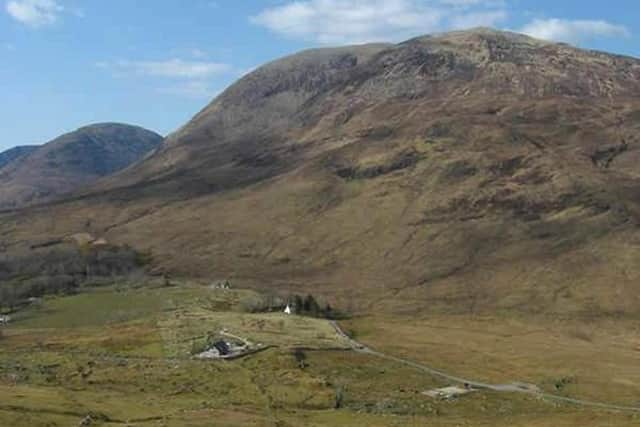Woman buried in Scottish cave with foetus, a piglet and puppy may have been a 'witch or midwife'
Analysis from High Pasture Cave near Torrin, which was long considered a “door to the underworld”, has revealed incredible detail about the woman, who was aged between 25 and 40 when she died, sometime between 50BC and 230AD.
The cave, where people brought offerings for the dead, was used for funeral rituals for around 1,000 years during the late Bronze Age and Iron Age.
Advertisement
Hide AdAdvertisement
Hide AdBut around a century after the cave’s function dramatically ended, the woman was brought here, possibly because she was considered a danger or an outcast, said Steve Birch, an archaeologist who has researched High Pasture Cave for 20 years and now co-written a new book on the site.
He said: "Had she done something bad in life? Was she considered to have been dangerous and had to be moved to this redundant site?”
The woman’s skeleton was carefully laid out on a bed of willow, with the foetus left by her abdomen and the bones of a perinate child – who lived at most for just two weeks – placed between her knees alongside the remains of the newborn piglet and dog.
Some of the woman’s bones were later crushed by stones and boulders, perhaps deliberately.


Ian Armit, archaeologist with University of York, in his contribution to the new book that is published in January, said there were no close parallels to the Skye burial, but that other unusual inhumations of women during the Iron Age were known.
He said: “There may be some hints, therefore, of persistent victimisation or scapegoating of certain women during the Iron Age – perhaps outcasts or witches.
“It is tempting to see the specific association of the High Pasture Cave woman with so many perinatal and foetal individuals as indicating her role as a midwife, an occupation traditionally associated with magic and the supernatural.
"Newborn or foetal individuals are often seen as liminal beings, not fully part of the human world. As such, this funerary tableau may have been regarded as a particularly appropriate marker for this passage into the underworld.”
Advertisement
Hide AdAdvertisement
Hide AdDNA analysis has now suggested the woman may have been the mother of the unborn child. A maternal link to the perinate child has now been discounted.
As activity at the cave intensified during the Iron Age, a stairwell was constructed into the subterranean ‘grotto’-style environment formed from natural limestone. Fires were lit at the entrance, with visitors descending into the cave and the sound of rushing water below.
Mr Birch said the back filling of the cave and its end of use signalled an important turning point.
He said: "Something special made that happen. It may have been a change in practice that led to this, or perhaps a change in belief.”
But the later arrival of the woman’s skeleton showed High Pasture Cave lived long in local memory, he added.
- High Pasture Cave: Ritual, Memory and Identity in the Iron Age of Skye by S.A. Birch, J.T. Mackenzie and G. Cruickshanks, is published in January by Oxbow Books.
Comments
Want to join the conversation? Please or to comment on this article.
